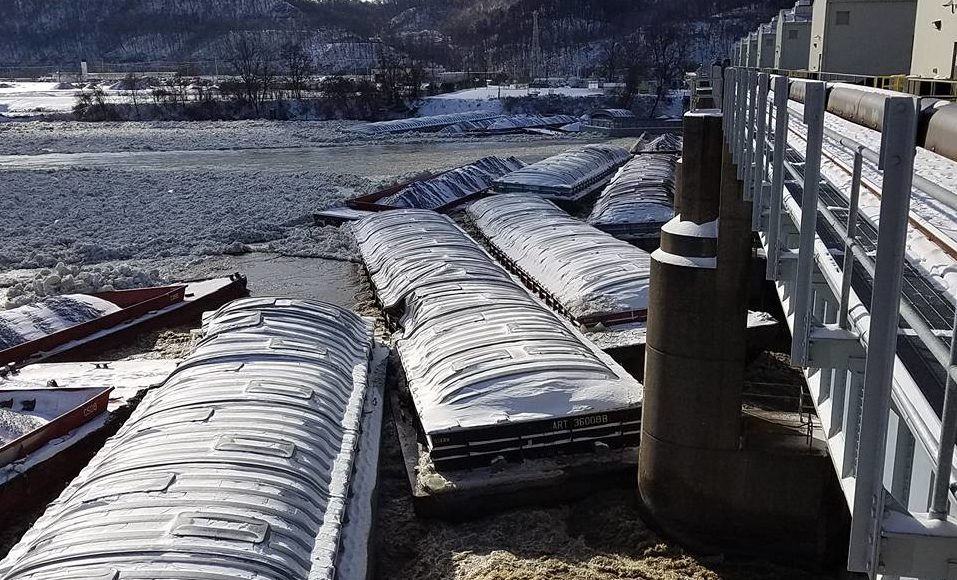Failure to address shoaling and adequately maintain mooring cells at an Ohio River fleeting area led to the January 2018 barge breakaway that struck the Emsworth Locks and Dams complex in western Pennsylvania, the National Transportation Safety Board reported.
The Corps of Engineers’ and Coast Guard’s “lack of resources and authority to effectively inspect fleeting areas and to ensure fleeting areas are maintained contributed to the accident,” NTSB investigators concluded according to a marine accident brief the agency issued Thursday.
Record rainfall west of Pittsburgh on Jan. 12, 2018, raised the Ohio more than 12 feet in six hours before the breakaway. River conditions were already difficult from freezing temperatures at night and above freezing temperatures during the day. That thawed ice, sent it floating downriver, and refreezing ice had built up at the head of a barge flotilla tied up at the Jacks Run fleeting area at mile 4 on the right descending bank.
The high water triggered a breakaway of 27 dry cargo barges loaded with coal and cement, sending them down to strike the Emsworth complex. The locks were not damaged but the incident caused $12.5 million in damage, including the total constructive loss of two Corps of Engineers vessels there. Seven barges were lost and all but one of the 20 remaining required repairs. There were no injuries reported.
“The NTSB’s investigation determined the failure to prevent shoaling and to maintain the fleeting area’s mooring cells resulted in inadequate mooring arrangements during high water and ice conditions which caused the barge breakaway,” the agency stated. “The U.S. Army Corps of Engineers’ and U.S. Coast Guard’s lack of resources and authority to effectively inspect fleeting areas and to ensure fleeting areas are maintained contributed to the accident.”
The NTSB presented three safety recommendations in its report:
- A requirement for fleeting area permit holders to submit waterfront facility operations guides to the Corps of Engineers for review to ensure adequate operating procedures for high water and ice as well as adequate maintenance procedures.
- -The Coast Guard and Corps of Engineers should seek a joint policy to ensure fleeting areas are maintained in compliance with permit requirements.
- The Coast Guard should develop a regulated navigation area for the Pittsburgh, Pa., region to ensure the integrity of fleeting areas, with detailed requirements for barge moorings during high water and ice conditions.




